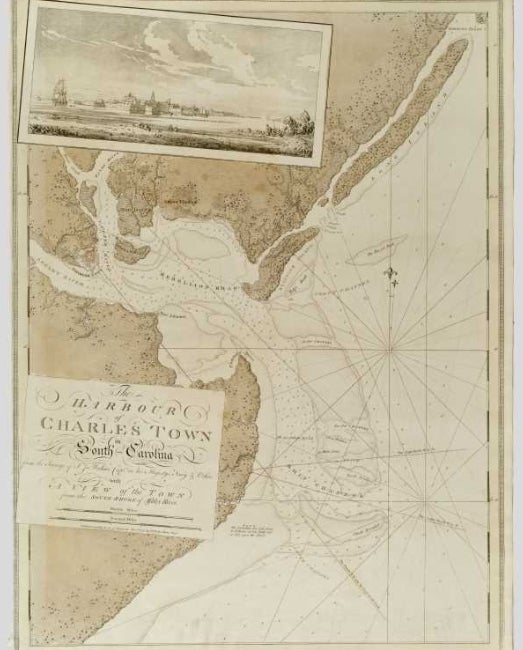The Declaration of Independence of Peter Timothy: Printer, Prisoner, and Patriot
Posted by Gilder Lehrman Staff on Thursday, 07/04/2019
![Declaration of Independence [Charleston, 1776] (Gilder Lehrman Institute, GLC000959) Declaration of Independence [Charleston, 1776] (Gilder Lehrman Institute, GLC000959)](/sites/default/files/Declaration_0.jpg) Every Independence Day, amidst the barbeques and fireworks, millions of Americans recall the start of our nation and the fifty-six signers of the Declaration of Independence who declared the freedom of the thirteen colonies from British rule. However, it was not just these men who risked their lives in rejecting the rule of King George III. There were also countless other patriots, living ordinary lives, who placed themselves in jeopardy by supporting the Declaration.
Every Independence Day, amidst the barbeques and fireworks, millions of Americans recall the start of our nation and the fifty-six signers of the Declaration of Independence who declared the freedom of the thirteen colonies from British rule. However, it was not just these men who risked their lives in rejecting the rule of King George III. There were also countless other patriots, living ordinary lives, who placed themselves in jeopardy by supporting the Declaration.
One of them was Peter Timothy, who, through printing copies of the Declaration of Independence, brought the call for freedom to the citizens of South Carolina. Peter's father Lewis Timothy, a French Huguenot who immigrated to the colonies in 1731, was a business partner of Benjamin Franklin, who asked Lewis to take over publication of the Gazette of South Carolina in 1733. In 1738, Lewis died, and according to his contract with Franklin, Peter then inherited the paper, although, due to his young age, he would not start publishing it himself until 1746. His mother, Elizabeth, became the first female journalist in the United States during the eight years she served publishing the Gazette following her husband’s death. Timothy began publishing the Gazette of South Carolina in 1738 after inheriting his father’s printing press. Timothy was a staunch backer of independence, but, in 1775, as tensions were mounting, Timothy ceased publishing the Gazette, fearing that British officers would confiscate his press. However, when the news of the Declaration arrived in Charles-town (today, Charleston), Timothy rapidly rebuilt his press in order to print copies of the document. On the second of August 1776, Timothy began printing the Declaration in the form of broadsides, which would be hung in public places, such as churches, in order to distribute the bold establishment of a new country, separate from Great Britain. It is unknown if Timothy printed several copies which were then destroyed or if he only printed one, as the copy in the Gilder Lehrman Collection is the only known existing copy printed by Timothy. It is also the only surviving copy of the Declaration that was printed south of Philadelphia.
 This printing differs from many other copies of the Declaration because of Timothy’s choice to include his own name. At the bottom of the document, small print below a dividing line reads “CHARLES-TOWN, Printed by PETER TIMOTHY.” By printing his name on the broadside, right under those of John Hancock and Charles Thomson, Timothy was making a statement that he, like the signers, agreed with all of the points in the Declaration, that he renounced the king and that he also wanted to take part in the creation of a new nation.
This printing differs from many other copies of the Declaration because of Timothy’s choice to include his own name. At the bottom of the document, small print below a dividing line reads “CHARLES-TOWN, Printed by PETER TIMOTHY.” By printing his name on the broadside, right under those of John Hancock and Charles Thomson, Timothy was making a statement that he, like the signers, agreed with all of the points in the Declaration, that he renounced the king and that he also wanted to take part in the creation of a new nation.
Unfortunately for Timothy, his printing had repercussions. In 1780 he was arrested for treason by British officers in Charles-town and was sent to a prisoner-of-war ship before ending up in a prison in St. Augustine, Florida. The prison itself was so perilous that the British barely posted guards, as those who tried to escape were guaranteed to be killed by either alligators or native people who were loyal to the British. Miraculously, Timothy survived the remainder of the Revolutionary War in captivity and at the war’s end returned to Charles-town, which by this point was renamed Charleston. Having lost all of his savings, he traveled to Antigua to take part in a “get rich quick scheme.” Regrettably for Timothy, his luck had run dry. He died after either being pushed or falling overboard while at sea.
Although Timothy’s decision to include his name on his print could be interpreted as foolhardy or ill advised, especially in light of what followed, it is important to consider the courageousness of supporting independence without any insight into what would follow. When students visit the Gilder Lehrman Collection and are shown this document, they are asked first whether, if they had been Peter Timothy, they would have put their name on the Declaration of Independence, and, unsurprisingly, many of them immediately answer yes, perhaps without realizing the full ramifications.
The independence of the United States of America would have been impossible without both the original signers and the ordinary individuals like Peter Timothy who were willing to risk everything for the hope of this document being the first step toward a new nation.
The "Declaration of Independence, July 4, 1776, printed in Charleston, South Carolina, ca. August 1776" is now on display at the New-York Historical Society as part of the Gilder Lehrman Institute exhibition Witnesses to History: Vignettes of the American Revolution.